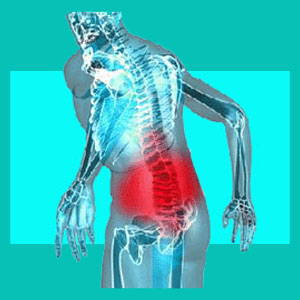
Lumbar herniated disc exercises are typically prescribed early on in the therapy program, for patients who complain of lower back pain and sciatica from a bulging disc. While herniated disc exercises are certainly some of the most common conservative modalities used by a great number of patients, there is much confusion about the actual purpose of exercise therapy and how any type of exercise can help to heal a herniated disc.
This article helps to clarify the benefits and limitations of exercise, when used to treat a herniated disc in the lower back.
Purpose of Lumbar Herniated Disc Exercises
Most patients who use exercise therapy are guided by a professional physical therapist or chiropractor that prescribes particular exercises and herniated disc stretches. A minority of patients might take the initiative and begin an exercise program all by themselves. Lumbar herniated disc exercises generally focus on the lower back, buttocks and upper leg muscles and might also include lots of abdominal focus, as well.
When asked why exercise is prescribed, most doctors and therapists will say something like this: “Exercises will strengthen the muscles and help support the spine. Herniated disc exercises will balance the muscles and provide a greater functional range of motion. Exercises will prevent injury by making the muscles stronger.”
Does this sound familiar? In most cases, the answer is a resounding, “Yes”. However, the logic of these statements is highly questionable.
Exercise Therapy for Lumbar Herniated Discs
Exercises will strengthen muscles when performed correctly, but that is the extent of the truth in the doctor’s overly-simplified explanation.
Exercises will not prevent injury. Exercise alone does not help support the spine. The postural muscles are ultra-strong to begin with and simply being upright on 2 legs provides more than enough exercise to support the spine and lots of additional weight.
As far as muscle imbalances, these are mostly a diagnostic scapegoat, although they can occur in rare instances. We have seen few cases of chronic low back pain that can possibly be attributed to the types of speculative functional muscle deficiencies that are often ludicrously blamed for enacting the symptoms.
Exercise will never heal a herniated disc. Exercise will not change the spinal anatomy, which is not muscular to begin with. However, there is no denying that physical therapy works well for herniated discs. There is no doubt that exercise can relieve pain and increase physical functionality.
So what is the real deal?
Verdict on Lumbar Herniated Disc Exercises
Herniated discs are not usually the true cause of chronic back pain or related neurological symptoms. In fact, they are not usually problematic at all. Most long lasting, treatment-resistant low back pain conditions are sourced from idiopathic processes. These may include undiscovered structural problems, muscular dorsalgia, regional ischemia, or a host of other possibilities. In essence, the pain may not be caused by the herniated disc or any other spinal abnormality.
Regardless, exercises will not change the herniation, but it surely will increase circulation and localized oxygenation. This directly counters some non-structural pain mechanisms, such as ischemia, providing regular, but temporary relief from a wide range of pain conditions.
Exercise also increases natural pain fighting chemicals in the body and has other benefits on the person, as a whole, that may help to undermine pain-inducing processes. Exercise is great in these regards, but a true cure is preferred.
Unfortunately, cures provided by exercise are rare. Far more common is the likelihood of positive pain management using targeted exercise therapy. The exercise will have to continue for life, in order for the efficacy to endure. Is this a perfect solution? Certainly not.
However, compared to other types of symptomatic treatment, such as enduring TENS, pharmaceutical therapy or injections, exercise is preferred. It is free, provides a plethora of other benefits and can be diversified to provide entertainment and reinforced self-esteem for people with a variety of fitness interests.
The bottom line clearly shows that exercise is usually limited in its ability to cure, but does offer many patients an all-natural, cost-free and constructive method of managing pain for as long as the symptoms continue.
Herniated Disc > Herniated Disc in the Lower Back > Lumbar Herniated Disc Exercises





